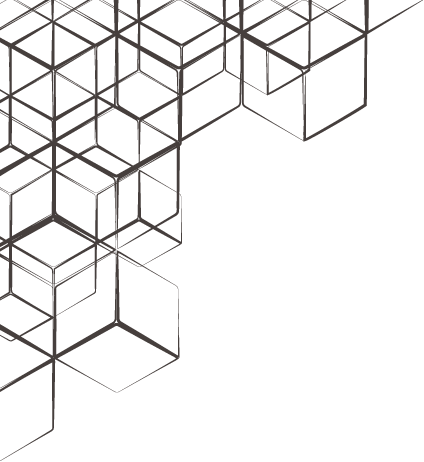Introduction
Take a moment to imagine that you are painting your bedroom and are at the store trying to choose a colour. If the store had six options to choose from how easy or difficult would choosing a colour be? Now, what about if there were 72 colours, how easy or difficult would making a choice be now? Most people will find that the second selection process is more difficult. Even though you may have initially felt relieved to have more options to choose from, the risk that you may experience regret or “buyer’s remorse” is greater in the second scenario, making the decision harder to make.
Although we usually believe that a greater number of options leads to more satisfying decisions, the paint example shows that this is not always the case. This situation is called Choice Overload or Paradox of Choice. When customers are offered too many options, it creates a fear of making the wrong choice or missing out on a better option, leading them to either simplify their decision-making process by relying on heuristics (mental shortcuts) or fail to reach a decision at all.
In classic experiment testing Choice Overload researchers set up a booth in a local supermarket which provided customers with the opportunity to test various types of jam; consumers were presented with either 6 choices or 18 choices. Although far more shoppers stopped to sample jam from the booth with 18 options than the one with 6 options (60% vs. 40% respectively), conversion rates were much higher for the booth with fewer options. Whereas 30% of the customers who sample jam from the booth with 6 options purchased the jam, only 3% purchased jam after sampling from the booth with 18 options. This experiment demonstrates that limited options encourage customers to purchase the product with confidence and post-purchase satisfaction. In the case of extensive selection options, customers feel less confident and more worried about their purchased product.
How Many Options are Optimal?
Another experiment was performed in which respondents had to choose from a group of gift boxes, which varied in terms of either shape, color, or both shape and color. This study revealed two things. First, there was a U-shaped curve of customer satisfaction suggesting that there is an “optimal” number of options to present consumers.
However, it should be mentioned that if the customers are well-informed or experts in that product, having fewer choices can lead to frustration (brands need to find the “sweet spot” with their target customer). Second, individuals were more satisfied when deciding between packages that differed in color rather than shape, which suggests color can be used more effectively than shape to improve the post-purchase satisfaction when faced with many options.
Applications to Brand-Building: Overcoming Choice Overload
As discussed above, Choice Overload has the potential to negatively impact product and category sales. Therefore, brands need to consider strategies to help them overcome Choice Overload. Brands can optimize the number of choices and streamline their offerings to maximize customer satisfaction. This will encourage their customers to buy their product and help them make swift decisions while purchasing the product. Costco does a great job in reducing the number of options that customers have to choose from in the real world. Compared to other stores like Walmart, which offer 100,000 product brands, Costco offers only 3800. This increases the ease of choice and customer satisfaction and reduces buyer’s remorse.
At Hotspex, we’ve helped some of our clients to identify and solve issues with Choice Overload:
Communication of Variants
Hotspex has found that even communications before consumers get to the purchase moment can cause choice overload and stress customers. Communicating multiple product variants can help consumers feel like they have a lot of options but if there are too many options and a lot of overlapped images they might feel overwhelmed. With so many options, the memorability of your advertisement decreases, i.e., they de-select your product even before the purchasing moment. Using in-context ad testing, Hotspex helped find the optimal layout of variants in the portfolio to improve memorability of the ad.
Category Simplification
Another strategy for minimizing Choice Overload is simplifying the category assortment to reduce the number of products for customers to choose from. Using MDS mapping, Hotspex uncovered perceptually overlapping products in the laundry detergent category and identified those that could be removed. When this reduced assortment was tested, laundry detergent sales increased by 11%.
Conclusion
Choice Overload or Paradox of Choice is a psychological concept that explains that while having several choices may initially appeal to customers, it can ultimately reduce sales and increase buyer’s remorse. Brands need to optimize the number of products offered to facilitate decision making, maximize their customer’s satisfaction, and improve their overall shopping experience. At Hotspex, we help brands overcome choice overload by identifying the optimal number of product or variant offerings and the best strategies for communicating related products in a portfolio to boost sales.
Sources:
Blair, Nicholas, “How retailers can address the paradox of choice.” https://www.dunnhumby.com/resources/blog/monetising-insights/en/how-retailers-can-address-the-paradox-of-choice/ . August 2, 2019.
Iyengar, S. S., & Lepper, M. R. (2000). When Choice is Demotivating: Can One Desire Too Much of a Good Thing? Journal of Personality and Social Psychology, 79(6), 995.
LeBarr, Nicole, “The Psychological Discomfort Of Buyer’s Remorse.” Hotspex Blog. https://www.hotspex.com/pbs/segment2
Reutskaja, E., & Hogarth, R. M. (2009). Satisfaction in choice as a function of the number of alternatives: When “goods satiate.” Psychology and Marketing, 26(3), 197-203.
Schwartz, B. (2004). The Paradox of Choice: Why More Is Less. New York: Ecco.




